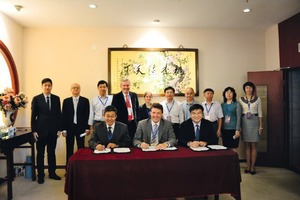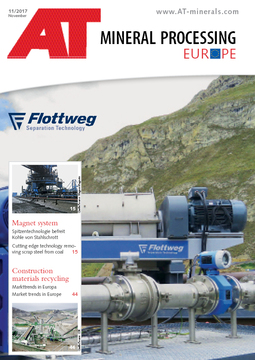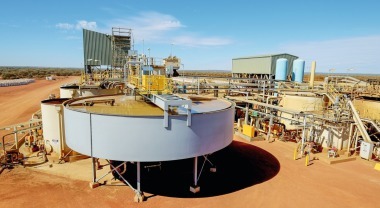Rare earths: Cooperation between Fraunhofer and China
The research institutes signed a Memorandum of Understanding in Beijing that will strengthen the international links maintained by the Lighthouse Project “Criticality of Rare Earths”. In this lighthouse project, researchers from seven Fraunhofer-Gesellschaft institutes are jointly working on new substitute materials, more efficient production technologies and also new recycling and upcycling concepts for rare earths. These raw materials are needed for the manufacture of computers, mobile phones and batteries, for example, or also for the permanent magnets used in wind turbines or electric cars.
Almost 90 % of the rare earths mined globally come from China. “The global market has recently seen some considerable price increases, not least also due to the measures the Chinese government has taken against illegal mines and the higher environmental standards it has implemented for rare earth mining. China therefore holds a key position when it comes to these strategically extremely valuable raw materials,” says Prof. Ralf B. Wehrspohn, the director of the Fraunhofer Institute for Microstructure of Materials and Systems IMWS in Halle (Saale), who coordinates the lighthouse project. He emphasises the importance of collaborating with the producers in China in order to ensure that German companies are also reliably supplied with rare earths.
“We want to learn from each other and above all want to help our partners in China to use this valuable resource more efficiently,” says Prof. Rudolf Stauber, the managing director of the Fraunhofer Project Group Materials Recycling and Resource Strategies IWKS in Alzenau, which belongs to the lighthouse project. “Together, we can, for example, work on optimised utilisation processes or the norming and standardisation of magnets or also on technologies for environmentally-compatible rare earth mining. We are also focusing on new material solutions for lanthanum and cerium. China again has ample deposits of both of these elements.”
The idea for stronger German-Chinese cooperation was developed within the scope of a joint workshop in November 2016. At the time, the Fraunhofer lighthouse project representatives enjoyed the rare opportunity of a visit to the mines near Baotou in Inner Mongolia, where they were also able to talk to experts from the Baotou Research Institute of Rare Earths (BRIRE). The recently agreed understanding not only envisages a regular dialogue between the researchers but also an exchange program for PhD students. The realisation of joint research projects is also planned.





